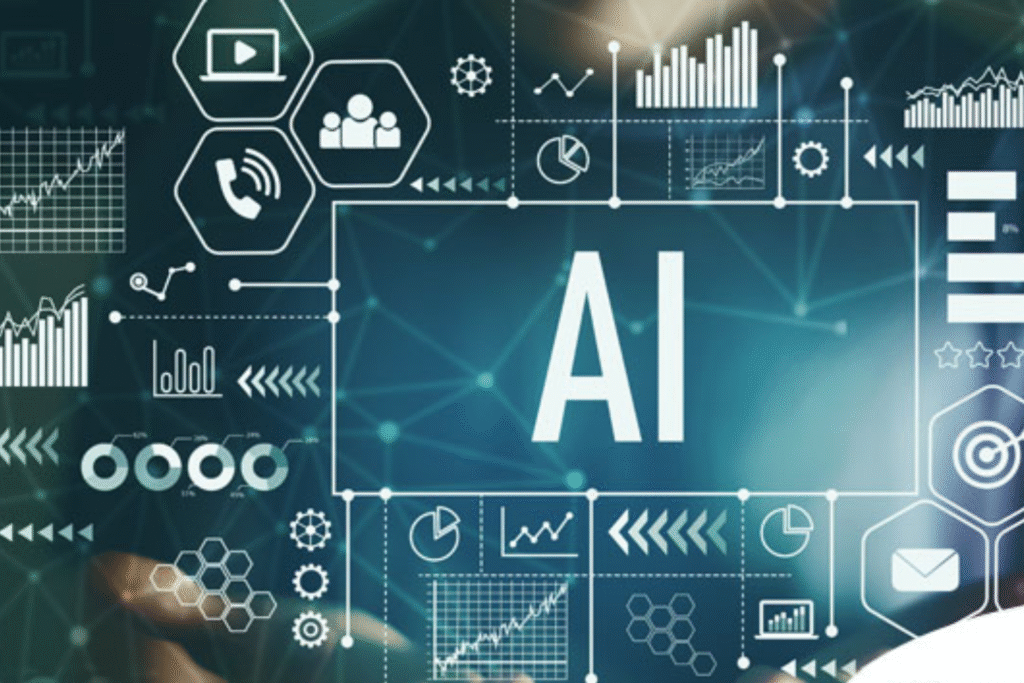
In today’s rapidly evolving regulatory landscape, organizations are under growing pressure to maintain rigorous compliance documentation. The rise in global regulations, alongside the risk of costly non-compliance penalties, makes robust documentation not just a legal necessity but a business imperative. Yet, traditional, manual documentation processes can be inefficient, error-prone, and resource-intensive. This is where artificial intelligence (AI) is ushering in an era of transformative automation for compliance teams.
In this long-form article, we will explore how AI-powered solutions are modernizing the compliance documentation process, examine the key technologies involved, and provide actionable insights for implementation. If your organization is looking to enhance efficiency, accuracy, and cost-effectiveness in compliance management, read on to discover how the latest AI advancements can help drive your compliance strategy forward.
Understanding the Need for Automated Compliance Documentation
Organizations face mounting complexities due to evolving legal frameworks, data privacy standards, and industry-specific regulations. Compliance documentation—the process of creating, updating, and managing records required by regulators—often involves gathering information across multiple departments, interpreting nuanced legal language, and continually tracking regulatory changes.
These manual workflows are time-consuming and resource-intensive, often diverting valuable talent away from higher-value work. Mistakes or oversights can increase risk exposure, result in costly fines, and damage reputation. Automated solutions powered by AI are proving essential in overcoming these challenges and ensuring organizations remain proactive, agile, and compliant.
Key AI Technologies Transforming Compliance Documentation
Leading-edge AI applications streamline compliance processes through technologies such as:
- Natural Language Processing (NLP): NLP enables systems to read, understand, and interpret human language—making it possible to extract relevant clauses from expansive legal documents, automatically populate compliance forms, and generate human-readable reports.
- Machine Learning (ML): ML algorithms analyze vast volumes of structured and unstructured data, detect trends, predict compliance risks, and continuously improve report accuracy based on feedback and new data sources.
- Robotic Process Automation (RPA): RPA utilizes rule-based bots to replicate repetitive tasks, such as data collection, document generation, and regulatory tracking—freeing compliance teams to focus on higher-order decision-making.
- Knowledge Graphs: These map complex relationships between regulations, policies, and business processes, allowing AI systems to identify gaps, trace compliance lineage, and offer actionable recommendations.
How AI Delivers Value in Compliance Documentation
When implemented strategically, AI-driven compliance automation offers a comprehensive set of advantages:
- Enhanced Efficiency: Automation reduces the administrative burden for compliance professionals, empowering them to dedicate more time toward strategy, analysis, and proactive risk management.
- Superior Accuracy: AI-driven documentation reduces human errors, mitigates risks of missed deadlines or incomplete records, and supports better quality audits.
- Cost Reduction: Automating routine compliance work can yield significant savings—from lowering labor costs to minimizing the likelihood of regulatory penalties.
- Real-Time Compliance: AI helps organizations stay updated with changing regulations by instantly monitoring, extracting, and incorporating updates into documentation workflows.
- Advanced Risk Management: By continuously analyzing organizational data and external regulatory factors, AI flags emerging risks and enables timely remediation.
For enterprise organizations seeking to build scalable, resilient compliance frameworks, leveraging a modern enterprise AI platform can provide a centralized foundation for deploying these AI-driven solutions safely and efficiently across business units.
Practical Use Cases for AI in Compliance Documentation
Across industries, forward-thinking organizations are already realizing the benefits of AI-powered compliance documentation through:
- Automated Report Generation: NLP and ML can parse through disparate data sources to assemble complete, regulator-ready compliance reports in minutes.
- Continuous Compliance Monitoring: AI “watches” for irregularities 24/7, instantly identifying out-of-policy activity or indicators of non-compliance.
- Regulatory Change Management: AI scanners monitor legal databases, updating policies and internal controls as regulatory environments shift—reducing reliance on manual review.
- Due Diligence Automation: AI aggregates and analyzes data on vendors, partners, or clients to accelerate onboarding and ongoing risk assessments.
- Policy Lifecycle Management: AI agents assist in drafting, distributing, and updating compliance policies, ensuring all stakeholders access the latest, most accurate information.
Curious about the concept behind automated compliance solutions? Learn more about what is an ai agent and how AI-powered assistants are redefining enterprise productivity.
Real-World Implementation Strategy
Transitioning from manual compliance management to intelligent automation requires strategic planning and cross-functional collaboration. Here’s a recommended framework:
- Identify Target Compliance Processes: Audit your organization’s compliance obligations and workflows to pinpoint repetitive, manual tasks that can be streamlined or automated.
- Assess Data Readiness: Ensure that data—both structured and unstructured—required for compliance documentation is accessible, accurate, and well-maintained.
- Select AI Tools and Partners: Evaluate best-fit technologies and vendors for your needs. Mature offerings like an enterprise ai agent can seamlessly integrate with existing systems, offering scalability, security, and out-of-the-box compliance support.
- Develop and Train AI Models: Build and train models tailored to your data and regulatory environment. Incorporate feedback loops for continuous learning.
- Integration and Testing: Connect AI-driven solutions with your organization’s IT ecosystem and validate output accuracy, process efficiency, and user experience.
- Deployment and Change Management: Empower teams through training and ensure support channels are in place for troubleshooting. Monitor adoption and collect ongoing feedback.
- Iterate and Improve: Periodically reassess the compliance landscape, retrain models, and update automations to maximize your compliance ROI and keep pace with regulatory change.
Key Considerations and Challenges
Successful implementation of AI in compliance documentation also hinges on addressing these core challenges:
- Data Quality & Availability: AI models are only as good as the data they’re trained and operate upon—data gaps or inaccuracies can undermine output integrity.
- Model Explainability: Especially in regulated industries, organizations must be able to explain how automated compliance decisions are made (crucial for audits and regulator trust).
- Bias Mitigation: Diligence is needed to detect and eliminate potential biases in underlying datasets and AI models.
- Security & Privacy: Compliance documentation often contains sensitive information; robust cybersecurity and privacy controls must be in place around AI tooling.
- Systems Integration: Efficient AI automation needs tight connection with existing compliance, HR, legal, and IT systems to prevent silos and ensure seamless workflows.
Setting Up Your Organization for AI-Powered Compliance Success
The fusion of AI with compliance documentation is not just a technological upgrade, but a catalyst for cultural and operational excellence. By automating the time-consuming elements of compliance, organizations empower their professionals to become more strategic, reduce organizational risk, and ensure ongoing alignment with regulatory demands. Early adopters are already seeing tangible results—faster audit cycles, reduced costs, and heightened confidence in their compliance posture.
As the regulatory environment continues to evolve, investment in AI-driven documentation management will become even more critical. Organizations that harness the full potential of AI today will be best positioned to navigate tomorrow’s compliance challenges and seize industry leadership.
Frequently Asked Questions on AI Compliance Automation
- What is compliance documentation?
Compliance documentation refers to the records, reports, policies, and procedures organizations must maintain to demonstrate adherence to legal, regulatory, and internal standards. - How does AI automate compliance documentation?
AI leverages technologies like NLP, ML, and RPA to parse regulations, extract relevant data, populate templates, and monitor compliance tasks—reducing manual input and human error. - Can AI adapt to new or changing regulations?
Yes, advanced AI systems can continuously scan for regulatory updates, interpret changes, and automatically update compliance documentation and alerts. - Is AI-based compliance documentation secure?
Reputable providers deploy enterprise-grade security, encryption, and access controls to protect sensitive data in AI documentation platforms. - What’s the difference between RPA and AI in compliance workflows?
RPA automates rule-based, repetitive tasks; AI uses algorithms to “think,” learn, and make judgments, often combining with RPA for end-to-end automation. - Are there risks of bias in AI-driven compliance documentation?
Bias can occur if AI is trained on incomplete or biased data. Organizations must monitor for bias and update models to ensure fairness and accuracy. - What skills do compliance professionals need in an AI-enabled environment?
Familiarity with data privacy, AI system fundamentals, and analytical skills are increasingly valuable, alongside traditional regulatory expertise. - How does AI improve audit readiness?
AI can create comprehensive audit trails, maintain up-to-date reports, and ensure documentation completeness—facilitating smoother, faster audits. - Is AI automation suitable for small and medium businesses?
Yes, modular AI solutions can scale to support organizations of all sizes, helping SMBs meet compliance as efficiently as large enterprises. - How do I get started with AI-powered compliance automation?
Start by identifying repetitive compliance tasks, assessing data availability, researching AI solutions, and involving leaders from compliance, IT, and legal teams in the process.
Embrace the Future: Elevate Your Compliance with AI
Compliance does not need to be a burden. With the strategic adoption of AI automation, organizations can unlock greater precision, efficiency, and peace of mind—empowering teams to focus on growth while confidently navigating today’s complex regulatory world.








